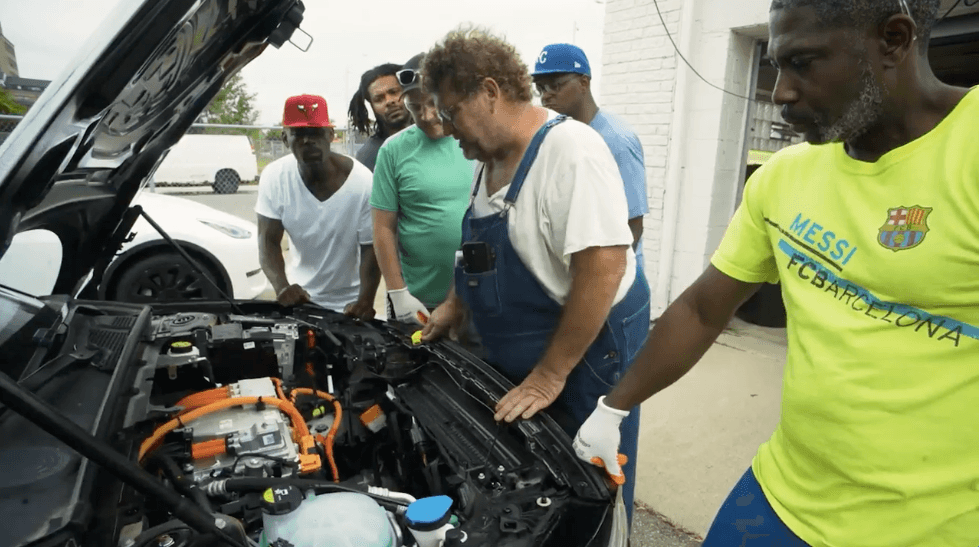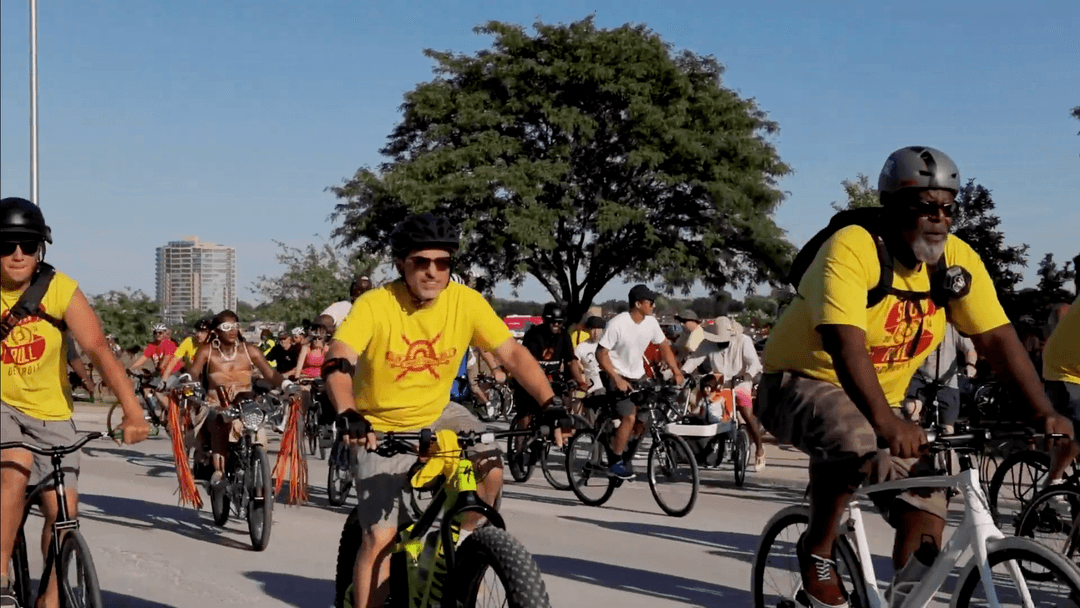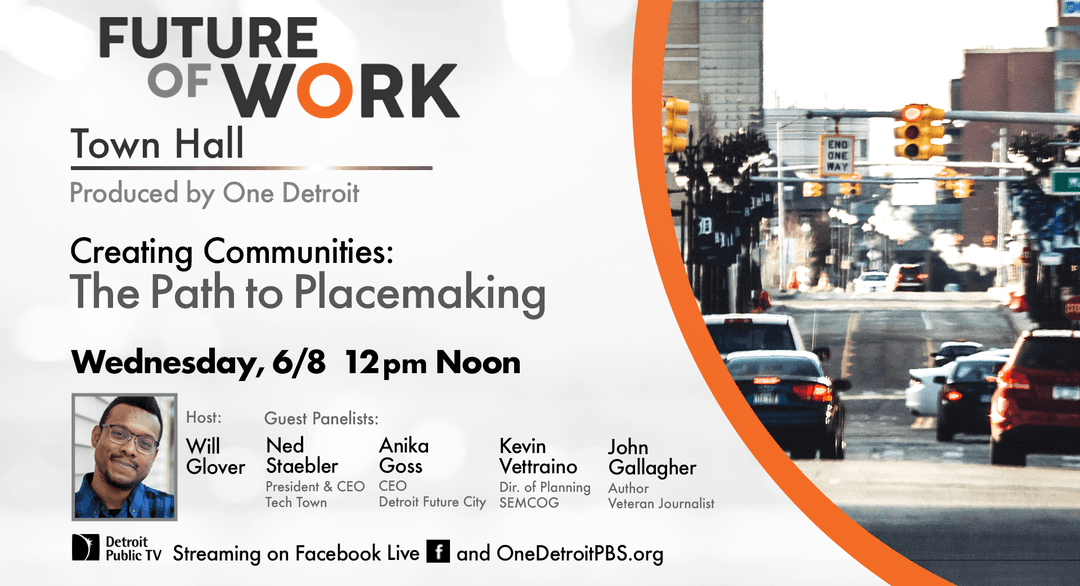City of Detroit seeks residents’ input on $200 million Joe Louis Greenway plans
Oct 7, 2022
The City of Detroit has launched a two-year planning study that allows residents to weigh in on the impact of the proposed $200 million Joe Louis Greenway project, the city’s proposal for connecting many of its neighborhoods to the riverfront.
RELATED: Detroit Embarks on New Planning Study for Joe Louis Greenway
The 27.5-mile biking and walking trail would connect Detroit’s riverfront to parts of metro Detroit like Hamtramck, Highland Park and Dearborn. The study includes sections of each City Council district, apart from Districts 1 and 4, and builds upon previous feedback city officials have received from neighborhood residents.

RELATED: View the Joe Louis Greenway Neighborhood Planning Study Community Engagement Schedule
RELATED: New Multi-Million Detroit Greenway to Connect City’s Southwest Side to Riverfront
One Detroit producer Will Glover sits down with BridgeDetroit reporter Bryce Huffman, as part of the organizations’ ongoing news partnership, to learn more about the city’s two-year planning study that started in September, and what feedback city officials might receive about the greenway.
Full Transcript:
Will Glover, Associate Producer, One Detroit: We’re going to talk about the Joe Louis Greenway. So, it is a bike path and walking path that’s being developed to connect some of the other communities around and in the city of Detroit. Just give us an update as to what the Joe Louis Greenway is, who it’s for, and when it’s happening.
Bryce Huffman, Reporter, BridgeDetroit: The Joe Louis Greenway is a 27-and-a-half mile biking and walking trail that will connect communities as far as Detroit’s riverfront, southeast in the city, to Hamtramck, Highland Park, and even Dearborn. So, it’s basically a loop that goes around and allows people to bike and walk-through different parts of the metro area. It’s really all about getting more green space in the city, more places for people to travel by bike without necessarily having to worry about car traffic, and just places for people to walk and ways to connect different city neighborhoods.
Will Glover: And where are we at as far as the actual build-out of the Greenway and also where is it being built out from? I know there’s some sort of connection to things like the Dequindre Cut.
Bryce Huffman: Yeah. Good questions. One of the plans is to extend the Dequindre Cut from where it currently ends at Mack and taking it to East Grand Boulevard across from I-94. And that’s really a way to connect it to Hamtramck. Right now, currently, they’ve already begun construction in southwest Detroit over the Gordie Howe Bridge area that they are constructing. So that’s where construction has begun so far.
Will Glover: I think that really touches on the city’s goal of becoming a city of the future, creating the places and spaces where people actually want to spend their time, and making it all very easy to navigate. So, with that said, you mentioned that it’s going to connect Detroit to Hamtramck. What else will the Greenway be connecting the city to? How far out and how interconnected are we going to be?
Bryce Huffman: Yeah. So along with Hamtramck, there will also be connections to and through Highland Park, and then when you get in the west side of the city it’ll connect to Dearborn. So different communities. It’s not going to connect all the way out to some of the further Metro Detroit suburbs, but the ones that kind of border inside the city and next to the city are going to be the ones that the Greenway is impacting.
And actually, they just launched a neighborhood planning study all around making sure that the areas in the Greenway that are going to be impacted, the neighborhoods that will be impacted by construction, and the final product get a say in what’s going to happen and understand what changes might be coming to their neighborhood, what opportunities might be coming to their neighborhood, and things to be looking out for for the next few years.
Will Glover: Because you’re mentioning the neighborhoods, one of the interesting things that I saw was something about a signage program. Tell us a little bit about that.
Bryce Huffman: Yes. So, I was at a meeting a couple of weeks ago and they talked about this neighborhood signage program, which is all about making sure that cyclists and walkers know where they’re at and know a little bit of the history and culture of the neighborhoods they’re in.
So, the first neighborhood that they’re starting this in is the Midwest Neighborhood, which is in the city’s District Six on the West Side. And it’ll be between… I want to say Warren and Joy Road are where the signs are going to be posted up. So, the idea is if you’re biking through a neighborhood, you can look at the sign and get a sense of the neighborhood you’re in and understand that history.
One of the big concerns a lot of people in Detroit have had, in general, is that their neighborhoods, that history, that culture is being erased or being displaced. So, this signage program is really about honoring those people and the people that made the neighborhoods what they are today.
Will Glover: Because we’re talking about the people and that’s really who this is all for, what has been the response of Detroiters hearing about this project going on? Are people on board? I know, usually, there’s a little bit of pushback or concern about whether or not the residents’ voices are going to be heard, whether their ideas are going to be included, and whether their needs are going to be met. Have you seen any friction in this process?
Bryce Huffman: Yeah. So, it’s really interesting. A lot of the times when I cover things where residents are allowed to give feedback, you hear a lot of pushback against design ideas or you hear a lot of concerns about a design idea or a plan.
So far, there have really been two things of note. First, is that there are a lot of residents, particularly in the McDougall-Hunt and Poletown East areas of the city, that when I asked them about the Dequindre-Cut extension plan they had never heard of it. They say no one from the city had talked to them about it.
But very interestingly, when I actually talked about what the plan is and why they want to do it, just about everyone was on board, very overwhelmingly supportive of the idea, very overwhelmingly in favor of the Greenway, in general, and the expansion of the Dequindre-Cut and like the idea of going into these neighborhoods and making sure people know where they are and what that neighborhood is all about.
Stay Connected:
Subscribe to One Detroit’s YouTube Channel & Don’t miss One Detroit Mondays and Thursdays at 7:30 p.m. on Detroit PBS, WTVS-Channel 56.
Catch the daily conversations on our website, Facebook, Twitter @DPTVOneDetroit, and Instagram @One.Detroit
View Past Episodes >
Watch One Detroit every Monday and Thursday at 7:30 p.m. ET on Detroit Public TV on Detroit Public TV, WTVS-Channel 56.
Stay Connected
Subscribe to One Detroit’s YouTube Channel and don’t miss One Detroit on Thursdays at 7:30 p.m. and Sundays at 9 a.m. on Detroit PBS, WTVS-Channel 56.
Catch the daily conversations on our website, Facebook, Twitter @OneDetroit_PBS, and Instagram @One.Detroit
Related Posts
Leave a Reply
Your email address will not be published. Required fields are marked*


























